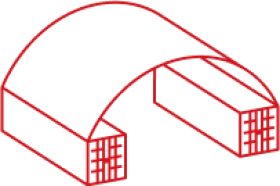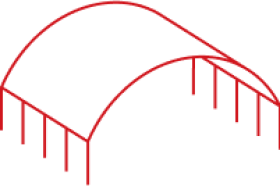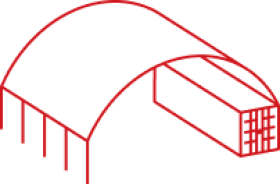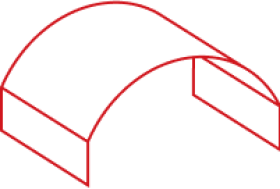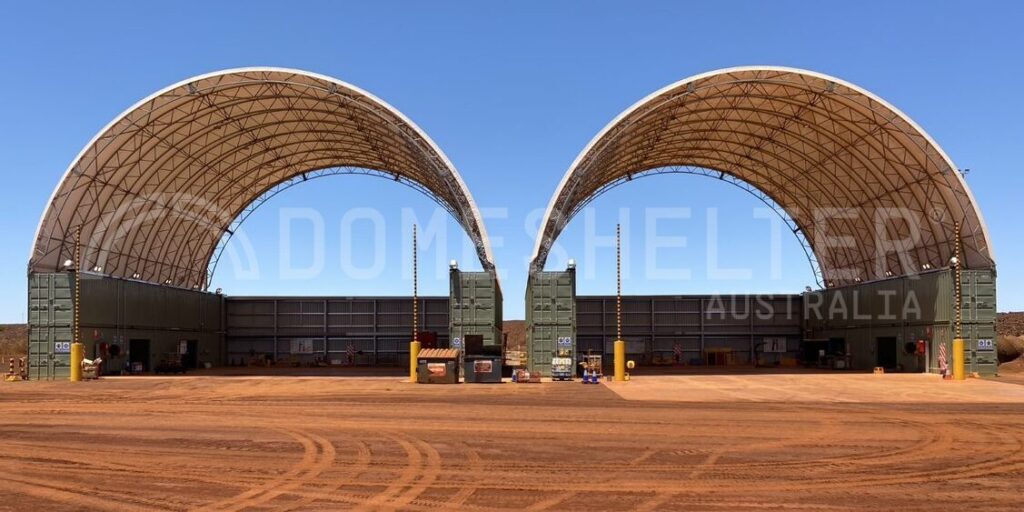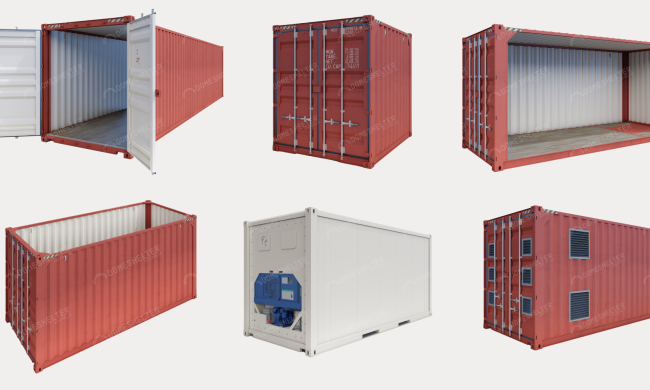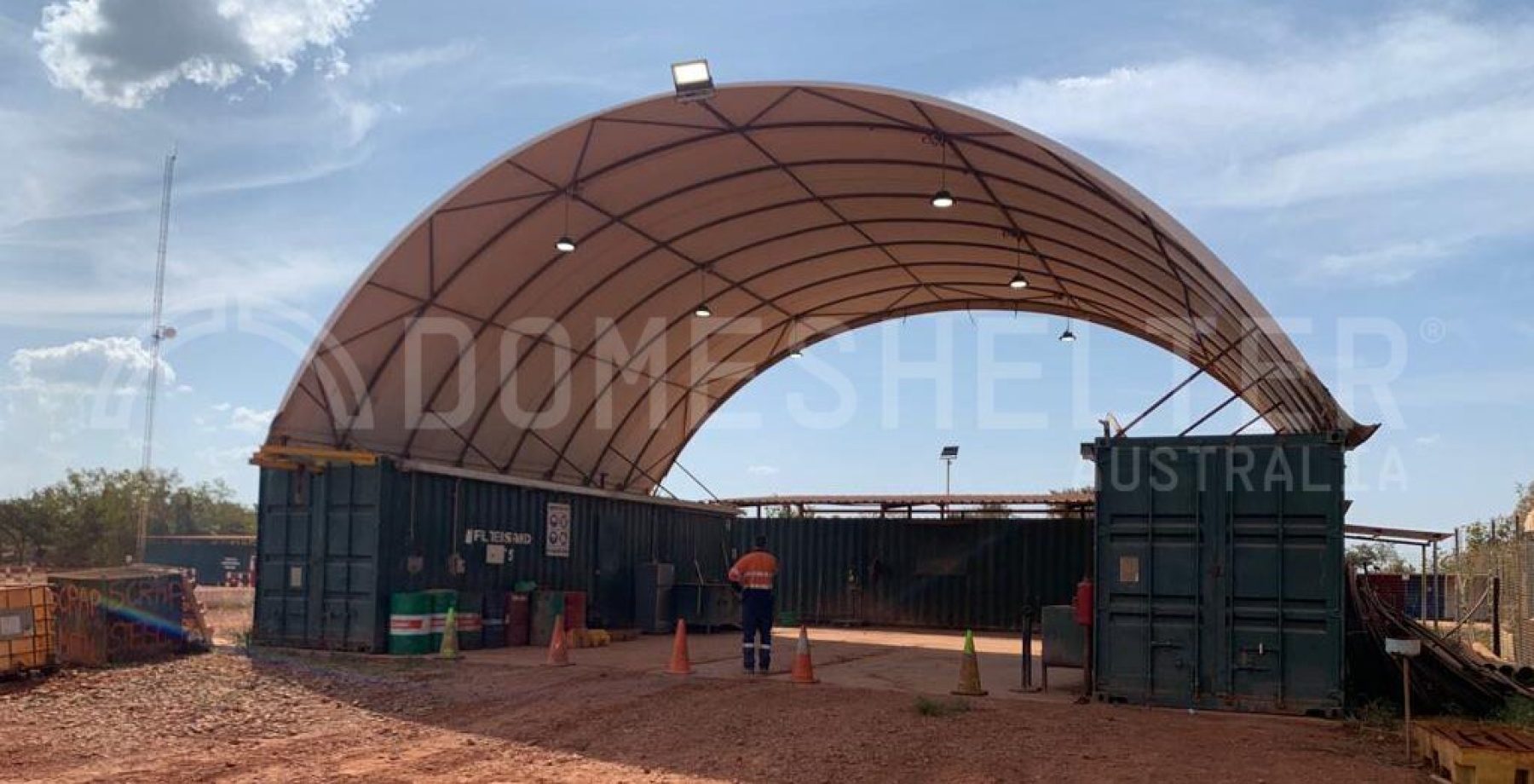
During the design stage of a DomeShelter™ Fabric Structure purchase, we highly recommend clients consider how they are going to orient their Shelter.
This is important for optimising the effectiveness of your Shelter throughout the day. This article explains what impact the orientation of your Shelter may have, and how we can assist in making the decision easier.
What is Orientation?
Orientation refers to the position of a Structure on its site. It is typically described by the compass direction that the front of the Structure primarily faces. For example, a Structure whose front end faces north would be described as north-facing.
The direction a Structure faces affects the amount of sunlight and/or shade it receives, as well as heating & cooling.
To achieve good orientation, the most important factors to consider are:
- The climate of your region
- True north and sun angles for your site or structure
- Optimum structure design for your climate zone
You can research your local climatology/ wind rose to help understand the best angle that will protect from inclement weather.
Why Does Shelter Orientation Matter?
Fundamentally, the orientation of a building determines its relationship with the sun.
Ideally, in the winter, a Shelter would have its openings facing the sun to generate warmth. In the summer, these openings should be shaded to prevent heat from entering the structure.
Orientation affects livability in the sense of comfort as well as health and wellbeing. The sun can be an abundant source of beneficial natural light and warmth, but can also be potentially harmful in the hot summer months if not properly accounted for.
Our environment’s habitability is largely at the whim of solar conditions, so considering Shelter position in relation to the sun is of utmost importance. When orientation is considered, the resulting Structure is specifically designed to provide the most comfortable environment year-round, while cultivating positive wellbeing of those inside.
Poor orientation and lack of appropriate shading can exclude winter sun and cause overheating in summer by allowing low-angle east or west sun to strike inhabitants.
Ensuring your Fabric Structure is oriented properly for sunlight throughout the day and at different times of year will help optimise its ability to protect your people and assets. Shielding staff from the harmful effects of the sun improves comfort and therefore wellbeing, which in turn reduces downtime.
What is the Best Orientation For My Shelter?
In general terms, north-facing walls receive more solar radiation in winter than summer because the sun is lower in the sky. East- and west- facing walls receive more sun in summer in the early morning and late afternoon when the sun is lower in the sky.
There is no cure-all answer for orientation; it is largely dependent on your exact location and different orientations offer their own individual benefits. It is recommended that each client researches the sun’s path in their region, to best understand how shade and light can be utilised with regards to Shelter orientation.
The below is an example guide only for a Shelter located in Northern Australia (Southern Hemisphere), based on the universal path of the sun – the sun rises in the east and sets in the west everywhere, because the Earth rotates eastwards.
North and South Facing Shelters
Positioning Shelters with the opening north-facing means the front of the Shelter will always have direct sunlight in winter and be protected from the sun during summer. The inside of the Shelter will remain well-lit due to the amount of sunlight coming in from the front.
Very little sunlight enters a Shelter that faces south, which can protect the goods inside the Shelter from sun damage.
West and East Facing Shelters
West-facing openings will receive direct sun in the morning year-round, which can be particularly harsh in the summer months, and again east-facing openings will receive direct sunlight in the afternoon as the sun sets. This can leave materials and staff badly exposed.
Endwalls can eliminate these openings to optimise shaded area and protect from the sun.
Explore Orientation Options With Our 3D Designer
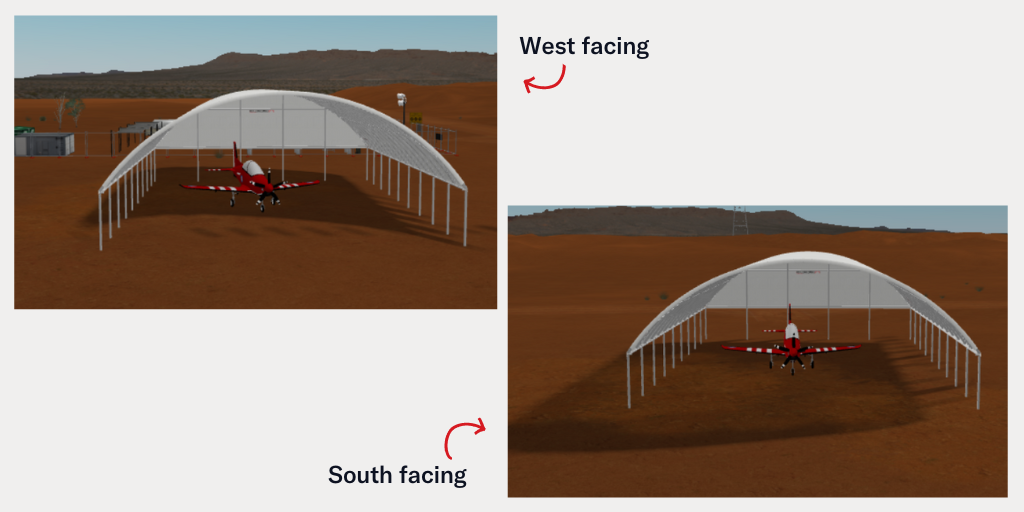
Simulated comparison of different orientations in afternoon sun using DomeShelter Australia’s 3D Designer – please note this example shows conditions in Western Australia, for clients based in the Northern Hemisphere the sun’s path will differ. You can explore further using the 3D Designer on our website.
Our free, easy-to-use 3D Design tool has a feature that allows users to place their Shelter models in their approximate geographical locations, orient the Shelter, and analyse the pattern of the sun through different times of day and throughout the seasons.
This simple and effective tool can show you how the sun will affect your prospective Shelter at different times of day throughout the year, so you can easily weigh up the benefits and downfalls of every possible Shelter orientation. This makes understanding orientation and the path of the sun significantly easier for our customers.
You can access the designer any time on our website; click here to get started.
Get In Touch
If you have any further questions regarding how orientation may affect your Shelter design or placement decisions, get in touch with our friendly team. Ultimately, our 3D Designer is the go-to place to explore shading efficiencies for your particular location at your own pace.
